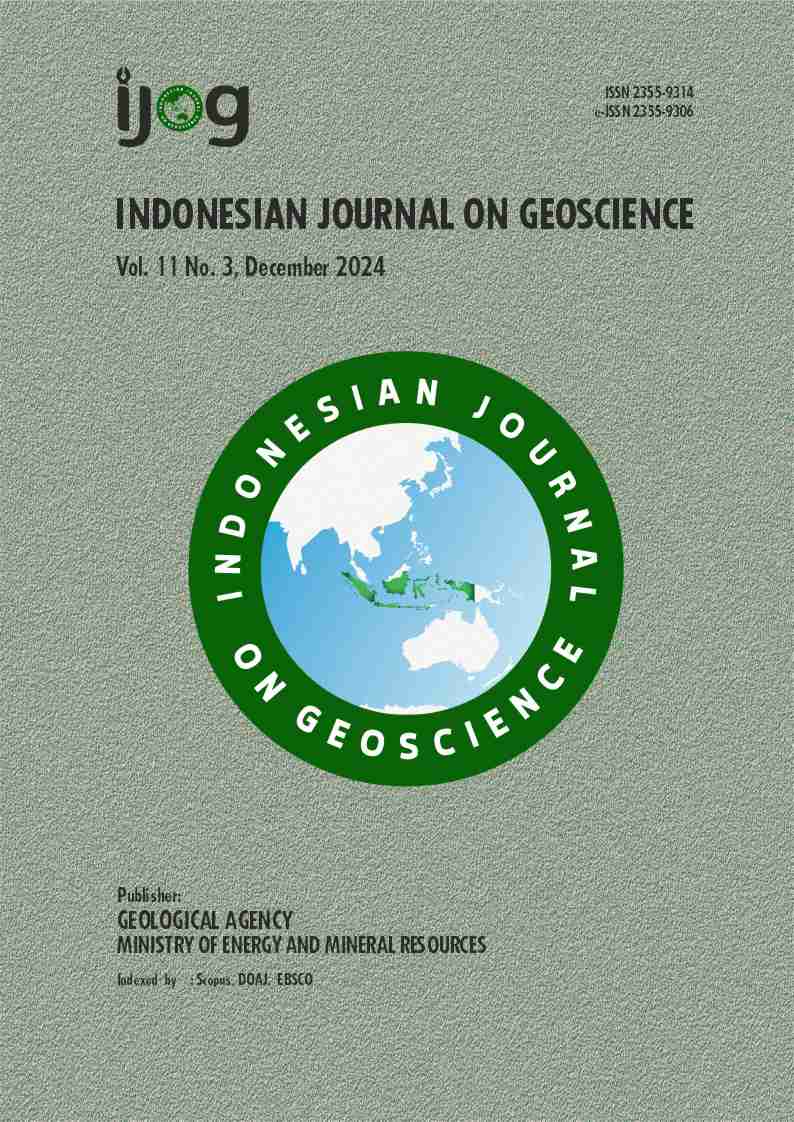Geophysical Investigation of Buried Small Fault Beneath Western Mount Malabar Using Electrical Resistivity Tomography in The Great Bandung Basin Rim
DOI:
https://doi.org/10.17014/ijog.11.3.409-421Keywords:
small buried fault, electrical resistivity tomography, Mount MalabarAbstract
This article presents the discovery of a buried fault beneath the soil layers in the Mt Malabar area, which complements the information on suspected faults on the previous geological maps. Using an Electrical Resistivity Tomography (ERT) method, this study aims to delineate the layer discontinuity as a fault and describe the subsurface geology. This study employed a 1400 m long ERT line as the main line to identify buried fault traces, while each ERT line has an 800 m long installation across the main ERT line to obtain the direction of the minor fault. The investigation found a minor fault in the rock layer at a high resistivity layer, approximately 160 m below the surface. The identified rock units are believed to include sandy clay in the upper layer, followed by tuff, sandstone, and basalt lava in the lower layer because its resistivity value is above 250 Ohm.m. The 3D ERT model interpreted a minor buried fault as a weak zone beneath the soil and obtained the fault strike at approximately N 310°E and dipping 66°. Furthermore, these results are strengthened by the geological map, which confirms that ERT L-1 and ERT L-3 profiles coincide with a suspected fault in the Qmt rock unit area.



















